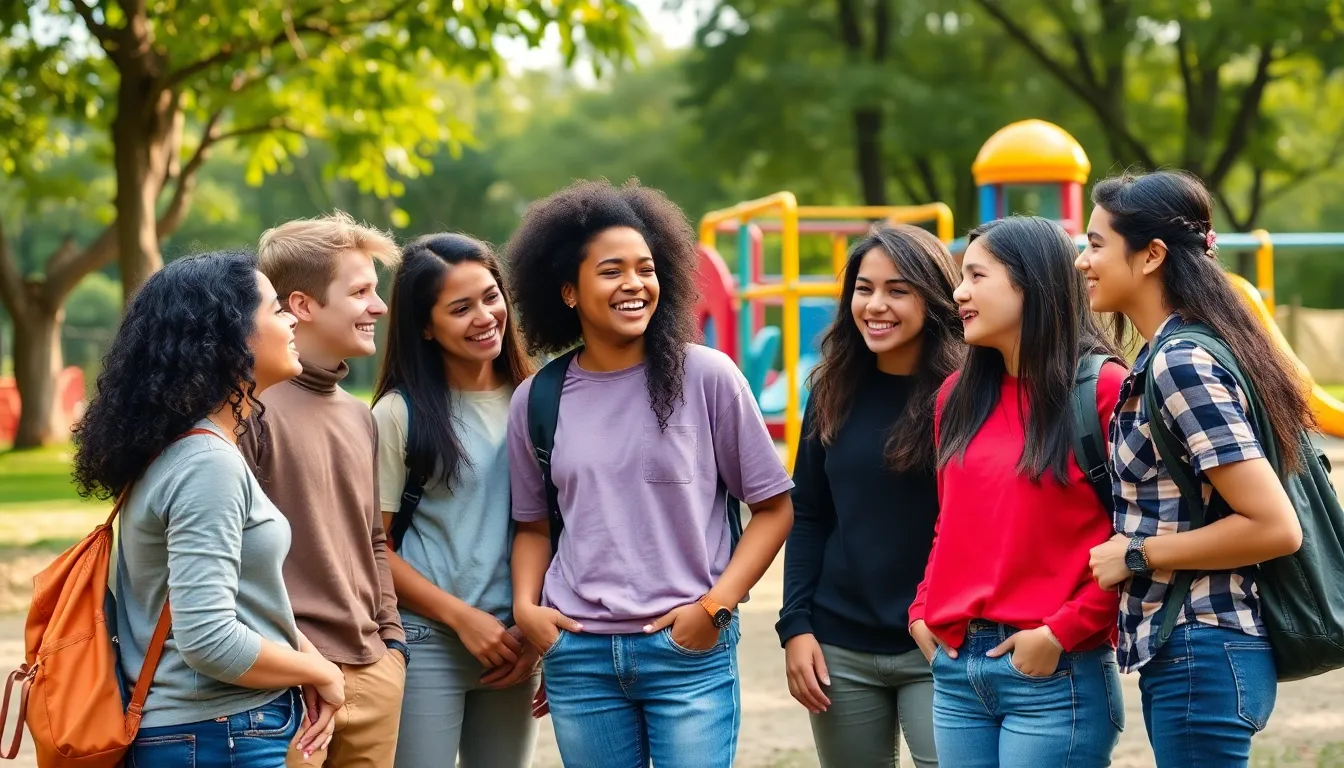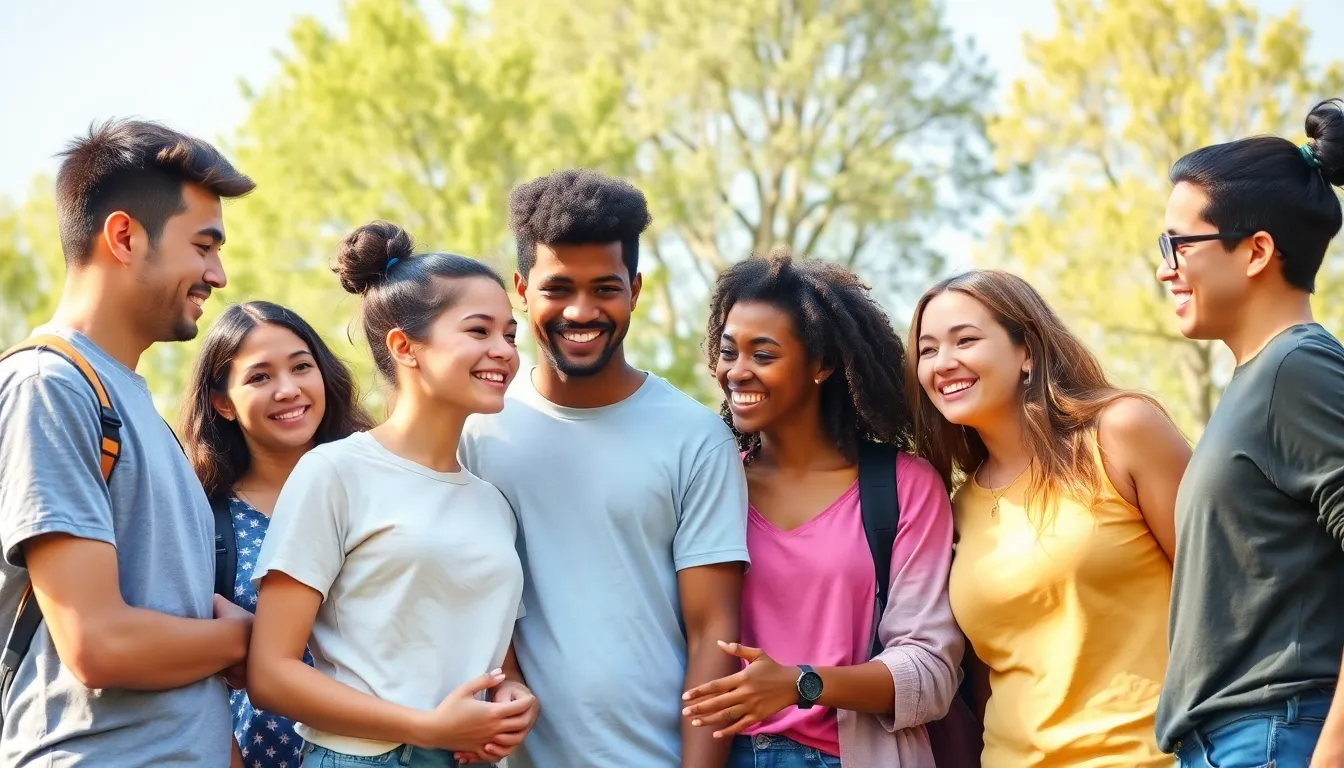Adolescence can feel like a rollercoaster ride—full of ups, downs, and loop-de-loops that leave them dizzy. With pressures from school, social life, and that ever-elusive quest for identity, it’s no wonder mental health often takes a backseat. But what if the secret to boosting emotional well-being lies in the power of teamwork and fun?
Group activities aren’t just a way to fill time; they’re a lifeline for teens navigating this chaotic phase. From laughter-filled game nights to creative workshops, engaging in shared experiences can foster connections and build resilience. So why not swap the solitude of screens for some good old-fashioned group bonding? This article explores how fun activities can be the ultimate antidote to adolescent angst, proving that sometimes the best therapy is just a group of friends having a blast together.
Table of Contents
ToggleImportance Of Adolescent Mental Health
Adolescent mental health holds significant importance as it influences overall well-being and shapes future adult mental health outcomes. Many teens encounter stressors from academic demands, relationships, and self-identity. Such factors can lead to anxiety, depression, and other mental health challenges. Healthy mental states contribute to better academic performance, more meaningful relationships, and improved social skills.
Engaging in group activities is essential for promoting mental health among adolescents. Activities like team sports, art clubs, and volunteer programs foster collaboration and social interaction. Building strong relationships with peers enhances feelings of belonging and support. Sharing experiences in a group can reduce feelings of isolation, strengthening resilience against mental health issues.
Mental health awareness is vital for adolescents. Increased awareness can encourage teens to seek help when needed and foster open conversations around mental health topics. Educators and parents play crucial roles in creating a supportive environment where discussions about mental health occur without stigma.
The impact of mental health extends beyond adolescence. Positive mental health during these years contributes to stability in adulthood, reducing the likelihood of mental disorders later in life. Prioritizing adolescent mental health through group activities promotes overall resilience. Investing in emotional well-being now paves the way for healthier futures. Engaging in shared experiences equips teens with coping skills, making it easier to navigate life’s challenges.
Benefits Of Group Activities


Group activities play a vital role in improving adolescent mental health. They create unique opportunities for youth to connect and grow.
Social Interaction
Interacting in group settings fosters friendships among teens. Sharing experiences during activities like team sports promotes collaboration and communication skills. Engagement in creative arts allows them to express feelings openly. Participating together builds a sense of belonging, reducing feelings of isolation. Studies show that social connections are integral to emotional well-being for adolescents. Positive peer interactions cultivate support networks, which help navigate challenges collectively. Ultimately, these relationships contribute to healthier coping mechanisms and resilience.
Emotional Support
Emotional support thrives in group settings, offering a refuge for struggling teens. Teams, clubs, or support groups provide environments where they feel safe to share their challenges. Encouragement from peers enhances self-esteem and motivation. Participating in dialogue about struggles fosters empathy and understanding among members. Additionally, discussing experiences helps normalize feelings of anxiety or stress. Research highlights that shared emotional expressions can lessen feelings of loneliness. These support systems empower adolescents to confront difficulties and develop healthy coping strategies over time.
Types Of Group Activities
Group activities play a crucial role in enhancing adolescent mental health. They promote social interaction, create supportive environments, and foster emotional resilience.
Physical Activities
Team sports like soccer and basketball encourage physical fitness and camaraderie. Engaging in outdoor adventures such as hiking or biking builds teamwork and boosts mood. Organized fitness classes, including yoga or Zumba, combine exercise with fun, allowing teens to unwind together. Researchers found that physical activity reduces symptoms of anxiety and depression in adolescents, reinforcing the importance of movement for mental well-being.
Creative Expression
Art workshops and music groups provide platforms for self-expression and creativity. Activities like painting, writing, or drama promote emotional release and encourage new friendships. Teens can explore their feelings and thoughts in a safe space, transforming them into artistic creations. According to studies, engaging in creative activities enhances emotional resilience and cultivates a sense of identity, critical during adolescence.
Group Discussions
Facilitated discussions enable adolescents to share their thoughts and feelings in a supportive environment. Peer-led conversations about mental health topics help reduce stigma and encourage openness. Structured group sessions allow participants to connect over shared experiences, fostering empathy and understanding. Research suggests that discussing mental health challenges strengthens social ties and increases coping skills, vital for navigating the complexities of adolescence.
Implementing Group Activities
Effective implementation of group activities promotes adolescent mental health. Creating an inclusive atmosphere encourages participation and connection.
Choosing The Right Environment
Selecting the right environment significantly impacts engagement levels. Comfortable, safe spaces foster open communication and trust among participants. Consider locations that are familiar and easily accessible. Indoor settings, like community centers or classrooms, provide structured environments. Outdoor spaces like parks or fields enhance physical activity and creativity. Noise levels and lighting should suit the activity type, ensuring minimal distractions. Prioritizing these factors enhances overall participation and facilitates connection among peers.
Facilitating Participation
Encouraging active participation requires thoughtful strategies. Providing diverse activity options meets different interests and skill levels. Clear guidelines ensure everyone understands their roles within the group setting. Using icebreakers and team-building exercises can also ease initial tensions, helping participants feel relaxed. Regular check-ins allow facilitators to gauge comfort levels and adjust activities as needed. Incorporating feedback from adolescents fosters ownership of the experience, enhancing engagement. Creating opportunities for peer leadership further promotes accountability and confidence within the group.




